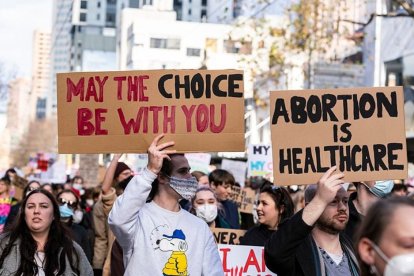Victory against life: Ohio votes to establish the “right to abortion” in its Constitution
As the polls anticipated, voters approved Issue 1 by a wide margin.

Wikimedia Commons
Ohio voters decided that the right to abortion will be guaranteed in their constitution. On election night, the results showed that 57% supported Issue 1, which in this case will add the right to reproductive freedom with protections "for health and safety” in the state charter.
On Tuesday, voters chose for or against Issue 1, which would precisely add reproductive rights to the constitution. In line with what the polls had been showing, it was easily approved.
What does Issue 1 do?
The constitutional amendment is quite similar to the one recently passed in Michigan and states the following:
- Every Ohioan has the right to make their own reproductive decisions, including contraception, fertility treatment, continuing one's pregnancy, miscarriage, and abortion.
- The State cannot tax, penalize, prohibit, interfere with, or discriminate against an Ohioan's decision to exercise his or her reproductive rights.
- Abortion can be prohibited after fetal viability, but cannot be prohibited if a doctor deems the procedure necessary to protect the life or health of the patient.
- Fetal viability is defined as the point in pregnancy at which a doctor considers the fetus to have a "significant chance of surviving outside the womb with reasonable measures" and is determined on a case-by-case basis .
"It is a disappointing result"
Alfonso Aguilar, president of the Latino Partnership for Conservative Principles, spoke with Voz Media after the results were released and said that they were "disappointing," and that "the reality is that the constitutional amendment approved will allow Ohio to establish an extreme abortion regime," he added.
As for the factors that may explain the outcome, he said that "the pro-abortion side had a lot more money and used it strategically to mislead and confuse voters about the true implications of Issue 1."
On the other side of the aisle, he did not observe that "the pro-life forces did not advance clear and convincing arguments that would expose how extreme this proposal is. They gave priority to talking about how Issue 1 puts women's health protections at risk, which is certainly important, but at the expense of talking clearly about how the proposal would allow the lives of unborn but fully formed children to be ended."
Finally, Aguilar made a reflection on the future of the pro-life message for future elections. "If the pro-life movement does not change its message and stop speaking clearly and forcefully on these radical proposals, it will not prevail on abortion proposals to be considered in other states in 2024 either. And there is no reason for these votes to be lost. Most Americans oppose late-term, unfettered abortion," he concluded.
The state GOP failed to stop the amendment in August
State Republicans set a previous referendum for August, which sought to tighten the requirements for amending the state constitution. However, it was rejected with 57% of the votes.
Voters voted for August's Issue 1, which was intended to create a constitutional amendment that made it difficult to pass future amendments, setting a threshold of 60% of the vote to pass. When rejected, half plus one of the votes is still required.
Following voter rejection of August's Issue 1, LaRose lamented the outcome warning that "Ohioans will see the devastating impact of their vote very soon."
“Radical activists who opposed Issue 1 are already planning amendments to exclude parents from a child's life-altering medical procedure, force small businesses to pay job-killing wages, prevent law-abiding citizens from protecting their families and eliminate critical protections for our officers. “I have been saying for months that an assault on our Constitution is coming, and that has not changed,” he expressed at the time.
RECOMMENDATION





















